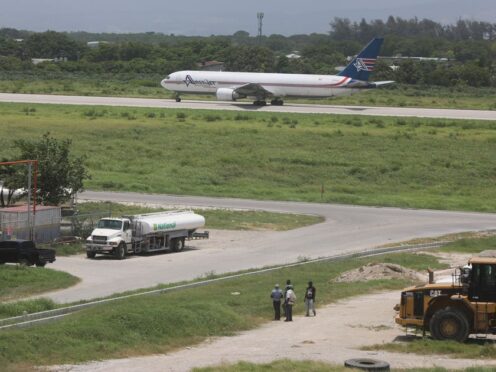
Haiti’s main international airport has reopened for the first time in nearly three months after relentless gang violence forced authorities to close it to all traffic in early March.
The reopening of the Toussaint-Louverture airport in the capital of Port-au-Prince is expected to help ease a critical shortage of medications and other basic supplies since the country’s main seaport remains paralysed.
However, only Sunrise Airways – a local carrier, is flying in and out of Port-au-Prince for now. US-based airlines are not expected to start doing so until late May or early June.
The first flight expected was one from Sunrise Airways bound for Miami and scheduled to depart at 2.30pm EDT.
Before Monday’s reopening, the sole airport operating in Haiti was the one located in the north coastal city of Cap-Haitien.
However, it was out of reach for many seeking to flee the country since the roads leading from Port-au-Prince to Cap-Haitien are controlled by gangs that have opened fire on cars and buses passing through.
As a result, the US government evacuated hundreds of its citizens by helicopter out of a hilly neighbourhood in Port-au-Prince, as did non-profit organisations, as powerful gangs laid siege to parts of the capital.
The attacks began on February 29, with gunmen seizing control of police stations, opening fire on the Port-au-Prince airport and storming Haiti’s two biggest prisons, freeing more than 4,000 inmates.
Gangs since then have directed their attacks on previously peaceful communities, leaving thousands homeless.
More than 2,500 people have been killed or injured in Haiti from January to March, a more than 50% increase compared to the same period last year, according to the United Nations.
Dozens of people had lined up at the Sunrise Airways counter hours before the afternoon flight, some taking selfies, others chatting contently.
“I’m very happy, but it hurts that I’m leaving my husband and my son,” said Darling Antoine as her eyes began to water.
She received a visa allowing her to live in the US, but the rest of her family is still waiting. They applied because gangs kept encroaching on their neighbourhood.
“There are heavy gunshots every day,” she said. “Sometimes, we have to hide under the bed.”
The attack on the airport left former prime minister Ariel Henry locked out of Haiti since he was on an official trip to Kenya at the time.
He has since resigned, and a transitional presidential council is seeking a new prime minister for Haiti. It is also tasked with selecting a new Cabinet and organising general elections.

Enjoy the convenience of having The Sunday Post delivered as a digital ePaper straight to your smartphone, tablet or computer.
Subscribe for only £5.49 a month and enjoy all the benefits of the printed paper as a digital replica.
Subscribe